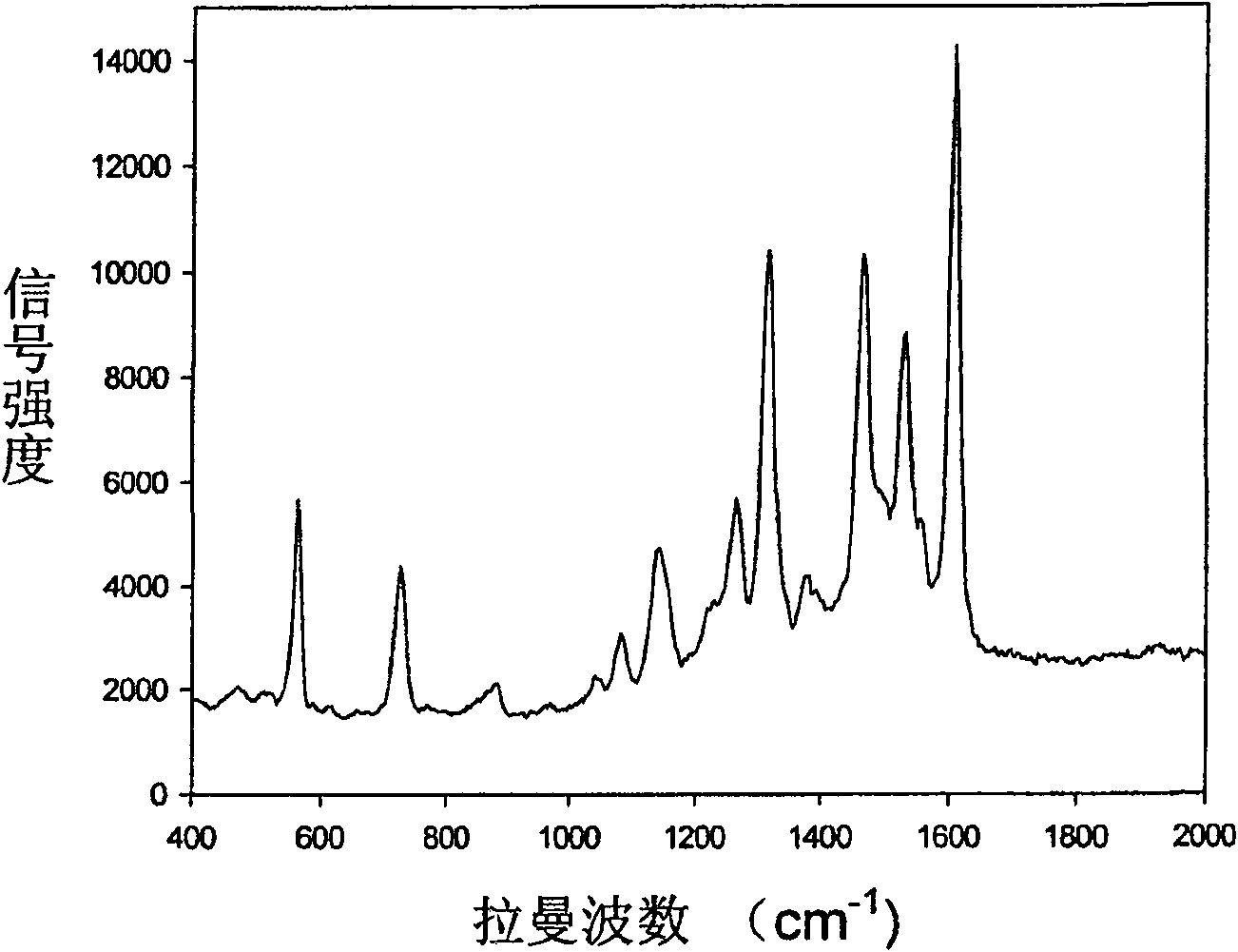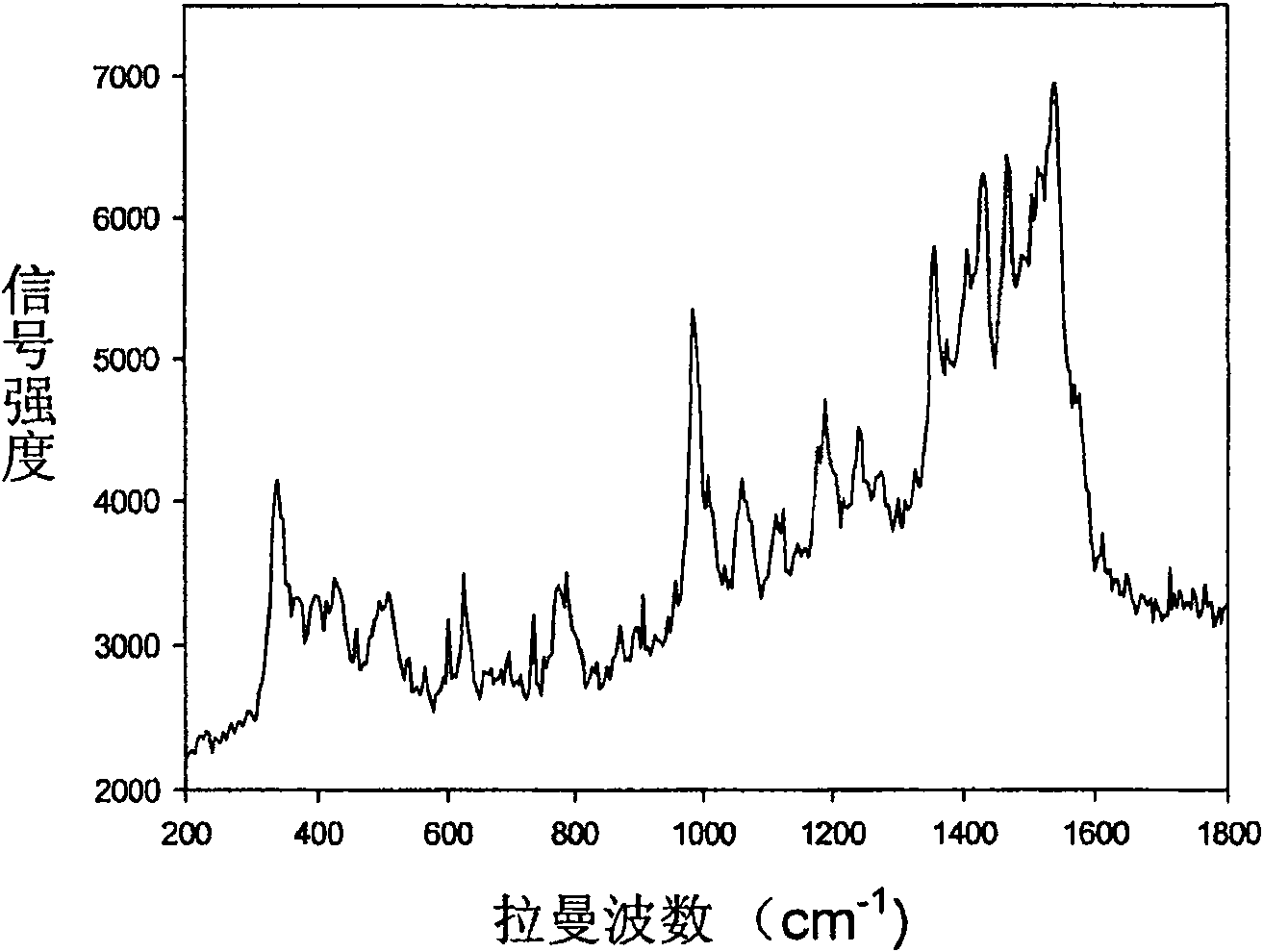Preparation method of magnetic surface strength laman scattering mark
A surface-enhanced Raman and Raman scattering technology, used in the fields of nanomaterials and bioanalytical chemistry, can solve the problems of complex preparation methods and difficult control, and achieve the effects of simple operation, good stability and wide excitation spectrum.
- Summary
- Abstract
- Description
- Claims
- Application Information
AI Technical Summary
Problems solved by technology
Method used
Image
Examples
Embodiment 1
[0032] Example 1, preparation of a magnetic SERS label using rhodamine 6G as a reporter molecule
[0033] The first step is to prepare magnetic nanoparticles with superparamagnetism.
[0034] Magnetic nanoparticles can be prepared by chemical co-precipitation method. This method uses Fe 3+ and Fe 2+ React under alkaline conditions to get Fe 3 o 4 Crystals precipitated. To better disperse the magnetic nanoparticles, surfactants can be added to the medium or the pH value of the aqueous solution can be changed. The particle size of the magnetic nanoparticles is preferably less than 30nm, and most preferably between 5nm and 12nm.
[0035] The second step is to prepare the magnetic SERS substrate.
[0036] Under ice bath conditions, 150mL concentration was 2×10 -3 The sodium borate solution of M was placed in a 500mL flask and kept stirring. Add 20 mL of the magnetic nanoparticle solution obtained in the first step, continue to stir, and mix evenly. Then add 50mL to a con...
Embodiment 2
[0040] Example two, preparation of a magnetic SERS probe using 2-aminophenol sulfur as a reporter molecule
[0041] The specific steps are roughly the same as above, the difference is that in the third step, the concentration is 10 -3 M's 2-aminophenolthiomethanol solution instead of a concentration of 10 -5 M's rhodamine 6G solution.
[0042] Drop the magnetic SERS label on the silicon wafer and fix it on the confocal Raman spectrometer to detect its SERS spectrum, such as figure 2 shown. The laser source is a 488nm argon ion laser, and the irradiation power on the sample is 1.2mW. The integration time is 1 minute. The label has both magnetic properties and a SERS signal with a high signal-to-noise ratio, can be controlled by a simple magnetic field, and is suitable for biological imaging and target molecule detection.
PUM
 Login to View More
Login to View More Abstract
Description
Claims
Application Information
 Login to View More
Login to View More - R&D
- Intellectual Property
- Life Sciences
- Materials
- Tech Scout
- Unparalleled Data Quality
- Higher Quality Content
- 60% Fewer Hallucinations
Browse by: Latest US Patents, China's latest patents, Technical Efficacy Thesaurus, Application Domain, Technology Topic, Popular Technical Reports.
© 2025 PatSnap. All rights reserved.Legal|Privacy policy|Modern Slavery Act Transparency Statement|Sitemap|About US| Contact US: help@patsnap.com


